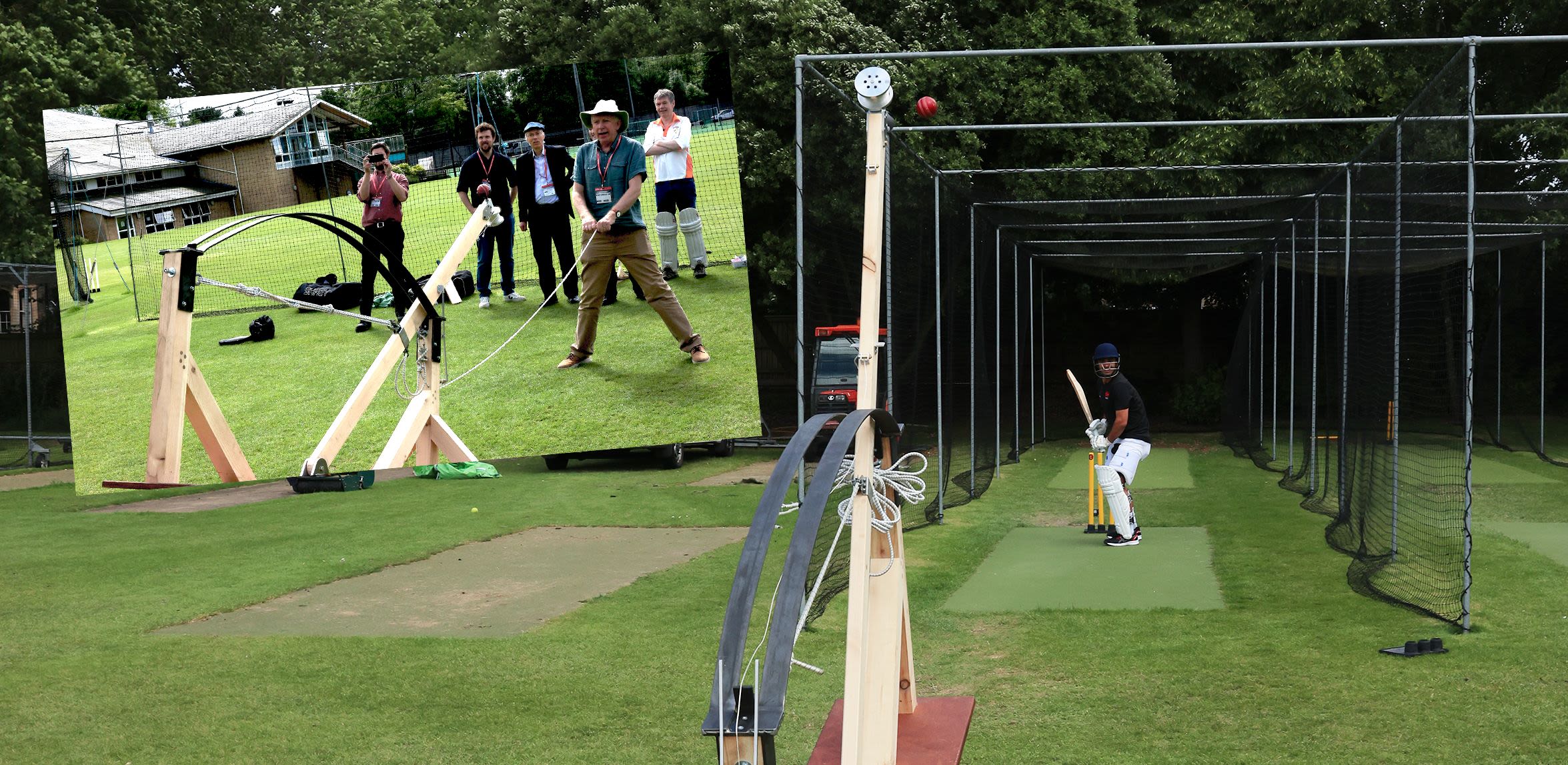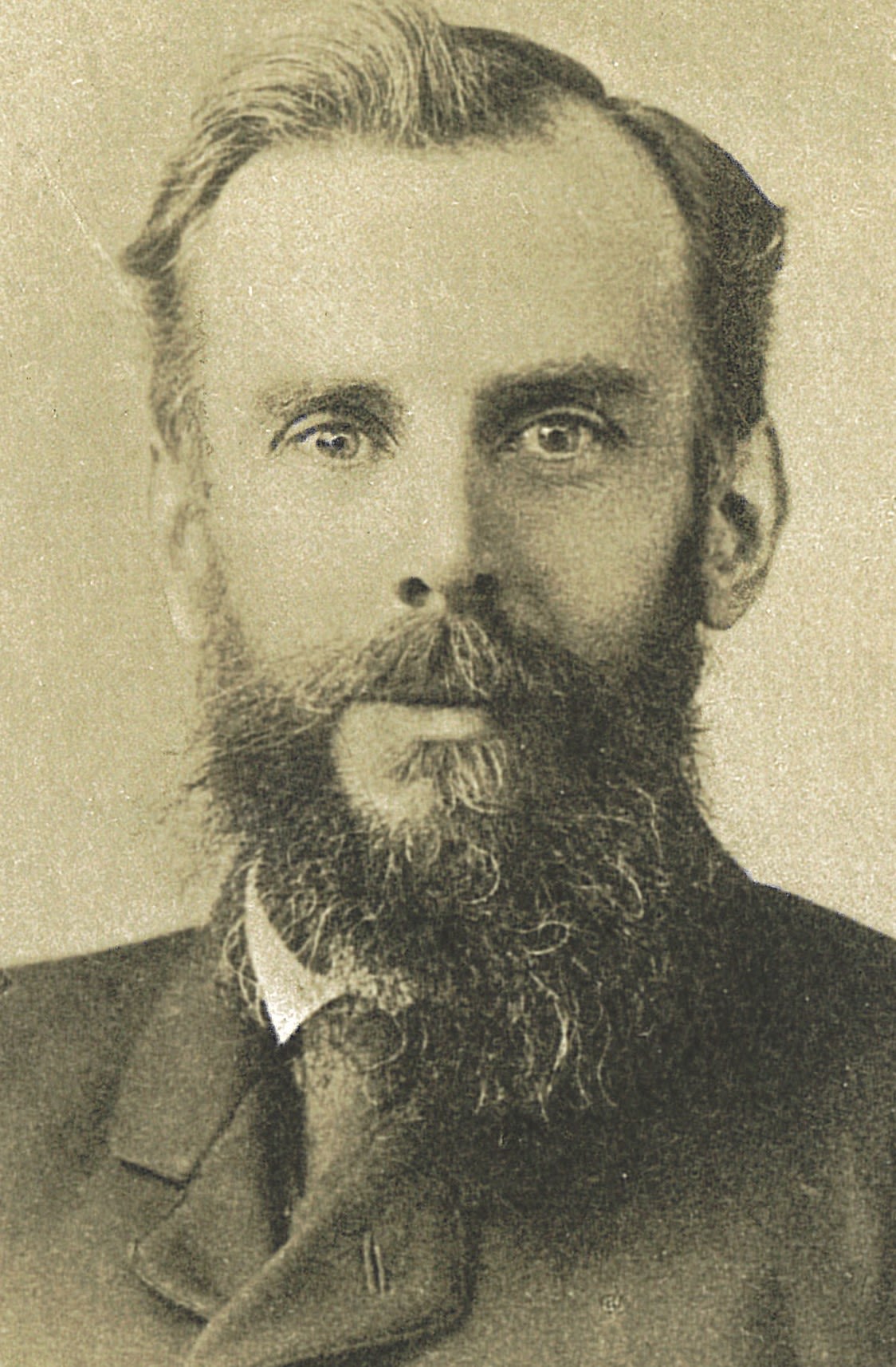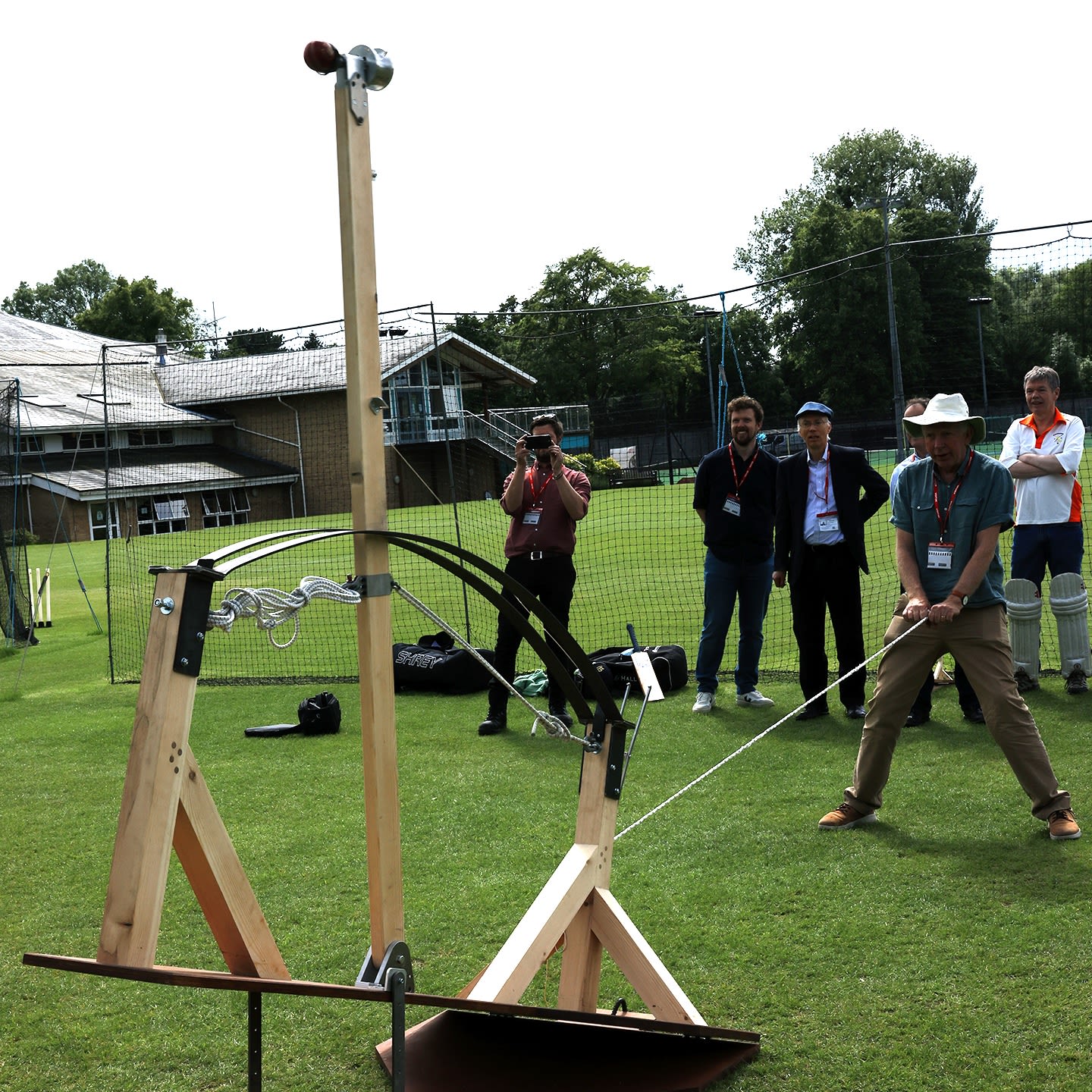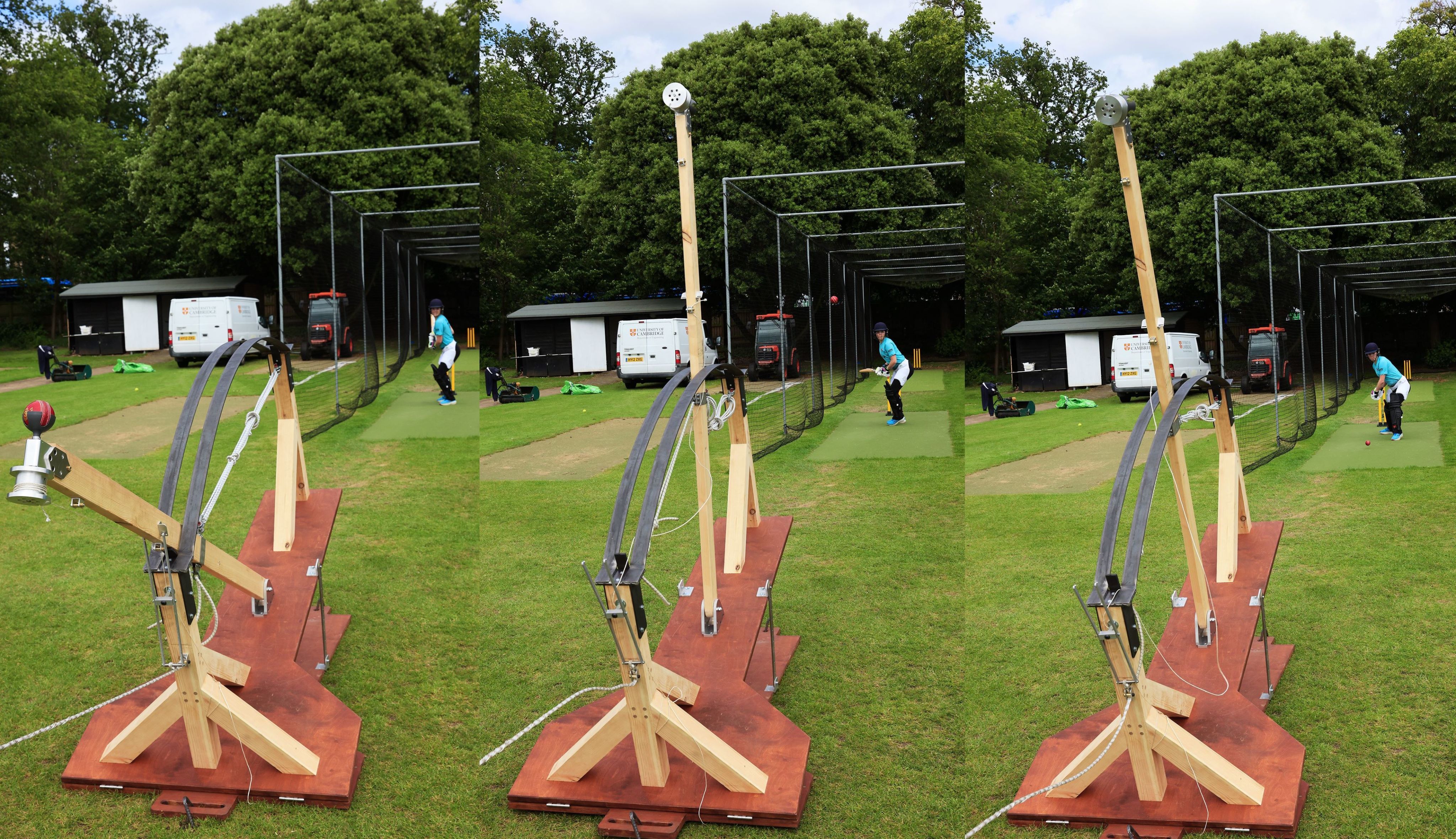Blast from the past
Engineers bring historic bowling machine back to life

Engineers at Cambridge University have reconstructed a historic bowling machine that bowled out players from the Australian cricket team during a visit to the city more than a hundred years ago.
Using patent illustrations and an old photograph discovered online, the team brought the 7ft contraption to life using materials that would have been available when Dr John Venn – who first described what are now known as Venn Diagrams, and was also President of Gonville & Caius College – created it in the early 1900s, and which bested the Australian cricketers in 1909.

Dr John Venn, by permission of the Master and Fellows of Gonville & Caius College, Cambridge
Dr John Venn, by permission of the Master and Fellows of Gonville & Caius College, Cambridge
The Venn bowling machine propels the cricket ball using a throwing arm powered by elastic rope. But what makes its design special is the ingenuity used to put spin on the ball – when the arm travels it pulls a string, which turns a spindle and a bobbin, which in turn spins the ball holder and the ball.
Hugh Hunt, Professor of Engineering Dynamics and Vibration at Cambridge – who previously led teams of investigators on the Channel 4 shows Dambusters: Building the Bouncing Bomb, and Attack Of The Zeppelins, and who has a research interest in “spinning things that fly” – set the University Engineering department the challenge of recreating the machine, which will be used at events and open days, and aims to capture the imagination of young people considering a career in maths and engineering. Among these, it will feature at Essex County Cricket Club on June 10, as part of an event for the Essex Year of Numbers initiative to inspire a love of learning, with a focus on numeracy.
Professor Hunt said: “It’s a great story, and an ingenious device, and at the time would have been in a lot of newspapers, but now it’s not really remembered outside the cricket world. Most people learn about Venn Diagrams at school, but not many know about John Venn’s quirky side – that he invented a bowling machine using wood and string and maths, which bowled out members of the Australian cricket team more than a hundred years ago. So the idea behind the project was to recreate a bit of history, and to show how much fun you can have with maths.”

Professor Hugh Hunt launches a bowl
Professor Hugh Hunt launches a bowl
However, all the Cambridge engineers had to work from was a black and white photograph of the machine, and a patent application from the time.
Thomas Glenday, Head of Design and Technical Services in the University’s Engineering Department, said: “The patent is around the intellectual property, rather than the technical detail, so we didn’t have a set of engineering drawings to work with. It meant we had to sketch it out for ourselves, figure out how the machine was actually going to work, and how it replicates the skill and speed of a spin bowler.
“The spin has been the key piece, and probably the most complicated part of the design. It’s thinking about the different forces that are acting on the ball simultaneously, and that transition of energy – it makes one hell of a diagram!”

But beyond the technical challenges, an important consideration for the team has been making sure the reconstructed machine is historically authentic.
“It’s a fun project, but we definitely wanted it to look the part," said Thomas. "We used high-quality hardwood, and really not much is made from wood these days, particularly for a device like this. But back then it was where the skillset was – people were used to working with wood, which has natural faults, which moves, which is not necessarily square. Today it would have been carbon fibre, and you’d be fabricating the pieces with a 3D printer.”
Published: June 2024
Words: Stephen Bevan
Images: Adam Page
The text in this work is licensed under a Creative Commons Attribution 4.0 International License.